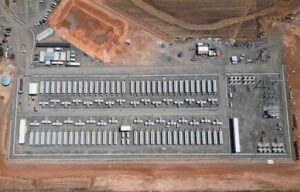A project that “started as a conversation” between experts before being rolled out through a collaboration between smart solar outfit Reposit Power and network company Ausgrid has won Energy Network Australia’s 2023 Industry Innovation Award.
Project Edith – named for electrical engineering pioneer Edith Clarke – was run over the course of 2022 to demonstrate how residential solar can continue to thrive on the electricity grid without challenging distribution network capacity limits or requiring costly additional infrastructure.
As RenewEconomy sister site One Step Off The Grid reported here, the project had hoped to show how the intelligent management of consumer resources such as rooftop solar and electric vehicles can, rather, deliver cheaper and more reliable energy for all.
“Project Edith shows networks taking a more customer-centric approach to innovation and are engaging closely with wide range of stakeholders to ensure customers are taken on the journey to net zero,” said ENA chief Dom van den Berg, on announcing the award.
“This project demonstrates how networks can utilise the grid in an economic manner while at the same time connecting with customers along the network.”
Zero electricity bills
The project, which Ausgrid describes as a dynamic network service, essentially asks participants to stump up $18,000 for a combination of solar (at least 6.6kW), battery storage (at least 11.8kWh) and a “Reposit box” – and then hand over control of that system.
“The grand bargain is you buy solar and battery, you put our controller on it and you give us total control,” Reposit CEO Dean Spaccavento said at the time.
“In return for that, we give you zero electricity bills, guaranteed, which means Reposit is taking the risk associated with the quality of the equipment, the quality of the installation, the quality of the trading behavior… [And] if we get it wrong, we wear it.”
As Ausgrid describes it, this will “demonstrate how Reposit can receive and respond to complex price signals from Ausgrid and the broader energy market while providing customers with a simple offer that provides certainty in their energy costs.”
The approach appears to have been enough of a success for Ausgrid to put a call out, in May, to aggregators and retailers of virtual power plants to be part of an expanded next phase of the trial.
‘Two simple things’
“The recognition of the ENA for Project Edith is terrific fuel as we look to expand to more connection points across more networks throughout the NEM,” said Spaccavento on LinkedIn on Tuesday.
It started as a conversation between CER/DER experts:
‘Does the NEM already have most of what it needs to support large numbers of participating consumer energy devices? If not, what would we need to add?’
We got our teams together, named ourselves something we were afraid to fail under, and found that by adding two small things to the NEM, we could safely and efficiently support very large amounts of CER/DER. Those two small things……
1. 5-min Dynamic Network Pricing – Just like Wholesale Energy pricing, but for network capacity.
2. A NER change to recognise a different way to calculate “Marginal Cost” – A very technical economic regulation definition that didn’t see foresee dynamic network pricing.
That’s it. Nothing else. Not even a hint of blockchain, or 5-year NEM-wide work streams, or Digital Twins, or $30M to fund consultants writing reports. Just those two small things.
As the Ausgrid project page further explains, dynamic operating limits, or envelopes, can allow customers to use more energy or export larger amounts of their rooftop solar at times when there is extra capacity on the network.
Dynamic network prices (DNPs) is a pricing structure that changes day to day based on the daily flows on the network.
“For instance, on a sunny mild day the import cost may be cheaper in the mid-afternoon to incentivise charging a battery or electric from the excess solar on the network, but on a warm cloudy day the cheaper period moves to the very early morning to encourage overnight charging.”
As DER expert Gabriell Kuiper wrote here, the sort of real-time network pricing being used in Project Edith is “far more thoughtful than bluntly charging solar customers to export excess solar to the grid,” which could be considered perverse given the benefits PV can provide to networks.
In an emailed statement, Ausgrid’s group executive of market development and strategy, Alex McPherson, said the network company was “incredibly excited” to have won the award for Project Edith.
“To date, we have demonstrated a proof-of-concept dynamic pricing engine with modest extensions to existing systems, and that this model is increasingly engaging to market bodies, customer advocates, retailers and DSOs,” McPherson said.
“We created an enhanced electrical model of part of the network, ran basic load forecasts on it, calculated and communicated the dynamic network prices needed to incentivise behaviour that keeps network use within its limits.
“Given this success, we’re now in the expansion phase, bringing on more retailers and aggregators to grow to 1000 enrolled customers. This scale will help quantify the response to dynamic pricing so we can better plan the network around flexible customer resources, and deliver a greener, more resilient grid.”









